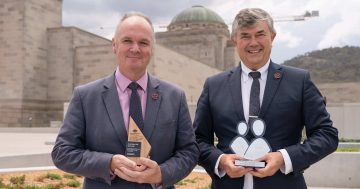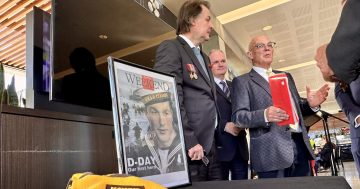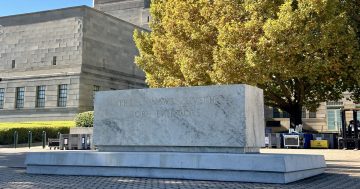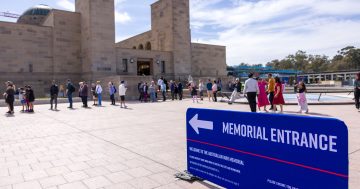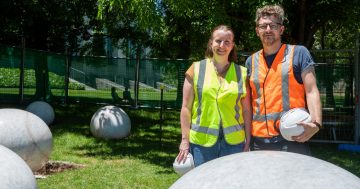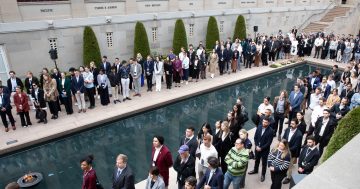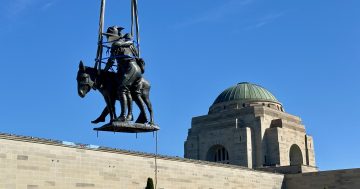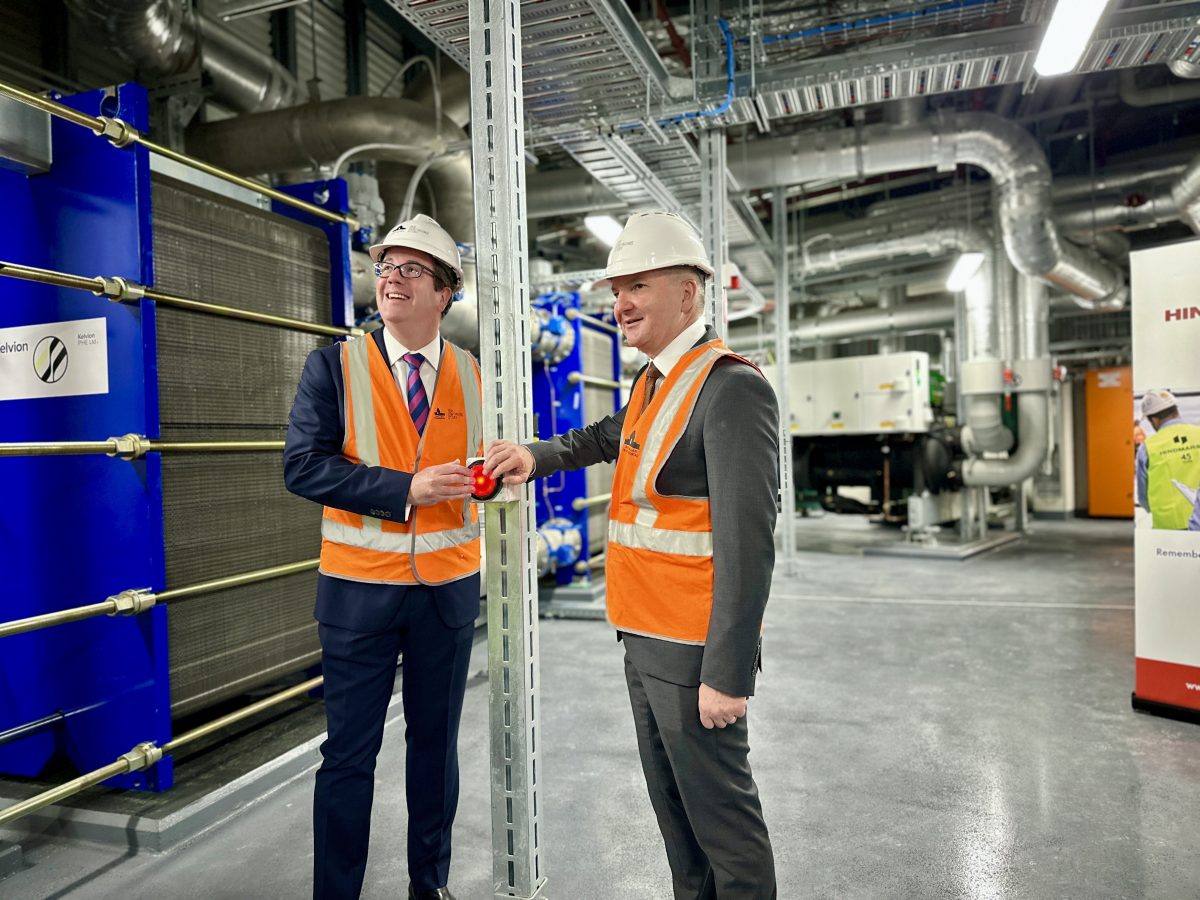
Don’t do it! Unless you’re Minister for Veterans’ Affairs Matt Keogh or Minister for Climate Change and Energy Chris Bowen. Photo: James Coleman.
When King Charles III arrives in Canberra alongside Queen Consort Camilla for their royal tour later this month, he’ll have a giant piece of new kit to check out at the Australian War Memorial.
“I’m quite sure he’ll appreciate this project,” AWM director Matt Anderson said.
“He’s been very much a visionary and I look forward to briefing him on this project as part of the visit.”
Federal Minister for Veterans’ Affairs and Defence Personnel Matt Keogh and Minister for Climate Change and Energy Chris Bowen were invited to the War Memorial on Tuesday morning (8 October) to press the big red button and officially switch on the institution’s new “world-class sustainable green energy project”.
Well, they would have been the first, were it not for a TV camera operator accidentally bumping the button with his arm while setting up a tripod (it wasn’t us, okay!)
The system is a ‘closed-loop geothermal heat exchange’, and the largest of its type in Australia.
“We’ve had a number of systems over the past 80 years, typically conventional gas-fired boilers and chillers, but they only last 20 years at a time before we’ve got to replace them,” project director Chris Widenbar said.
These have been replaced with more than 120 km of piping, and 216 vertical holes drilled 150 metres deep across the Memorial’s eastern precinct, including under the CEW Bean Building, bus parking bay and grounds.
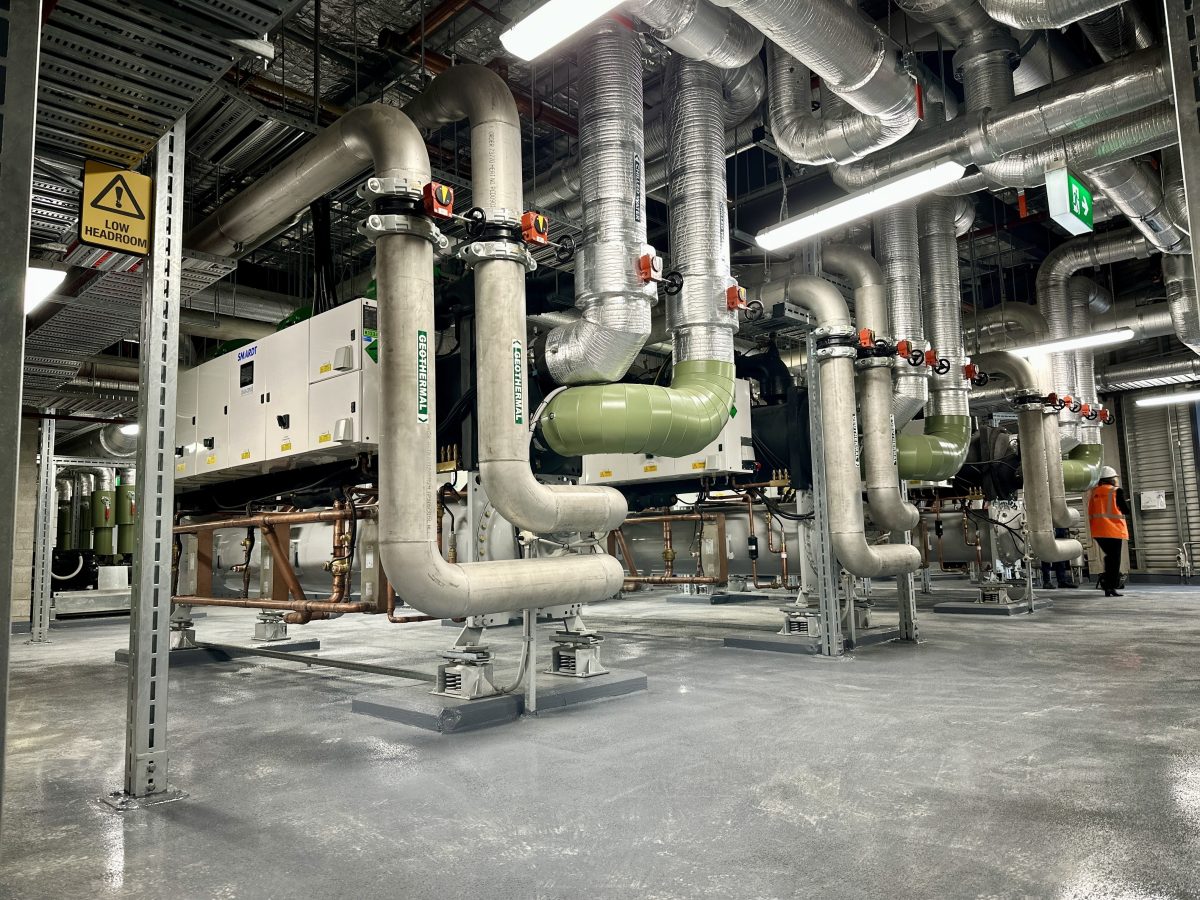
The water is pumped up to 150 metres underground where the temperature is a stable 17.5 degrees Celsius. Photo: James Coleman.
“What we do is we pump water through the system and through the hundreds of holes in the ground to use the earth’s stable temperature,” Mr Widenbar continued.
“At 150 metres deep, the temperature is always 17.5 degrees Celsius all year round – it doesn’t matter if it’s cold like today or a hot day at 42 degrees. So when we send hot water down in summer, it comes back cool and in winter, it comes back warm.
“It’s a closed-loop system, which means we fill the pipes with water once, and that just keeps circulating for the next 100 years.”
On those extreme days when the system struggles, large condensers powered by a new bank of roof-mounted solar panels will help.
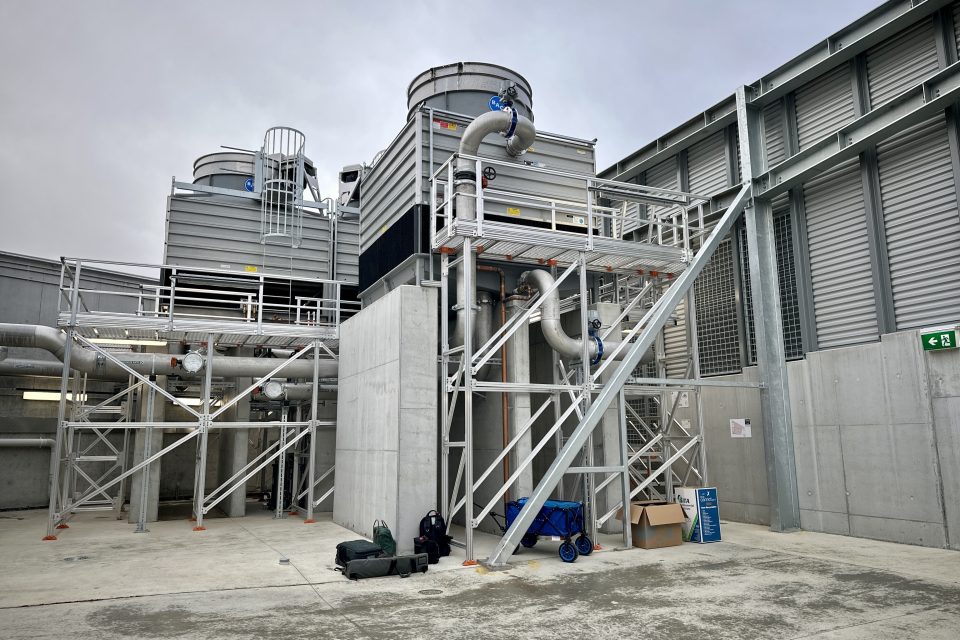
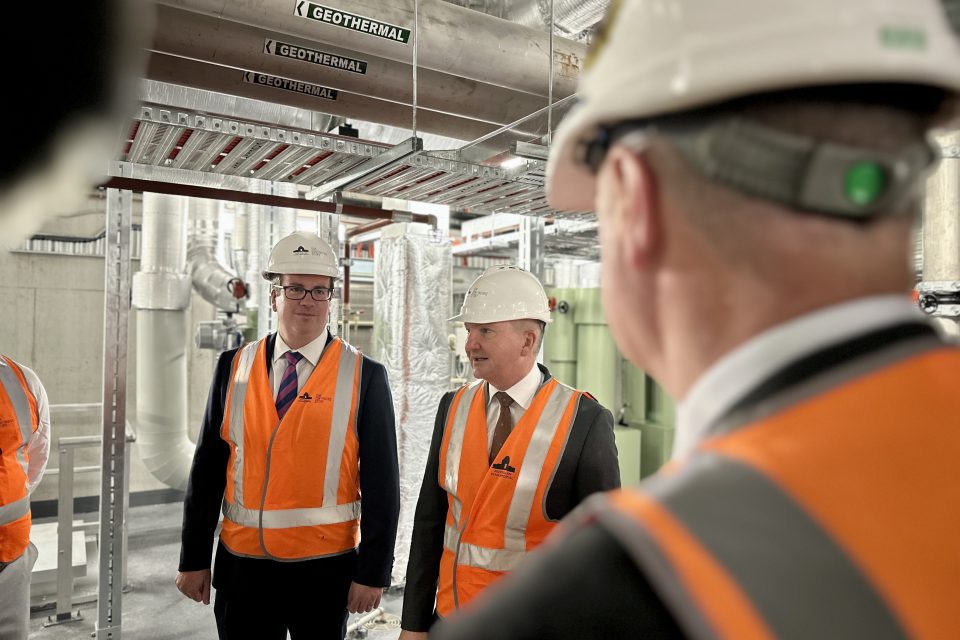
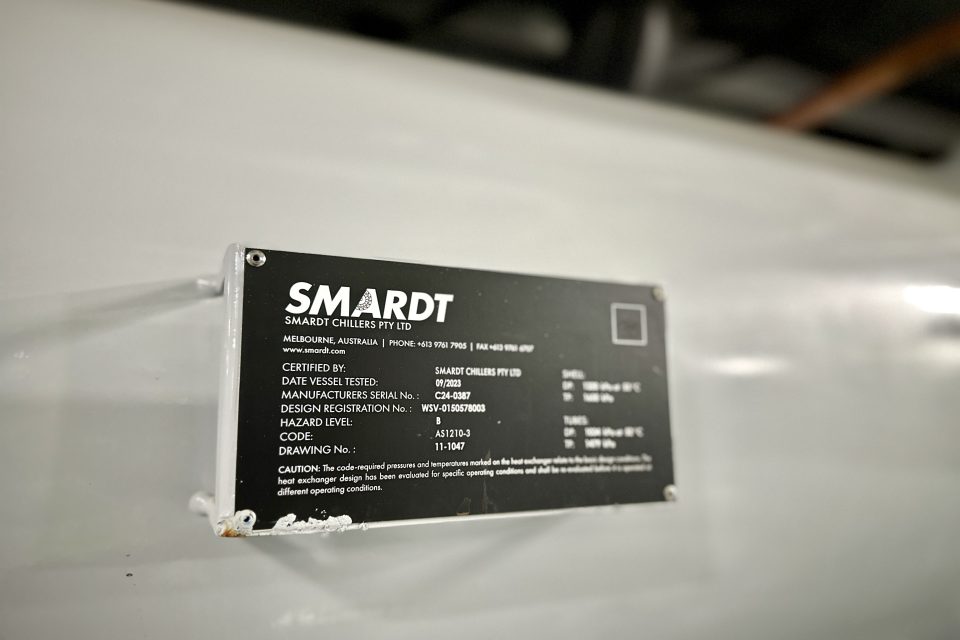
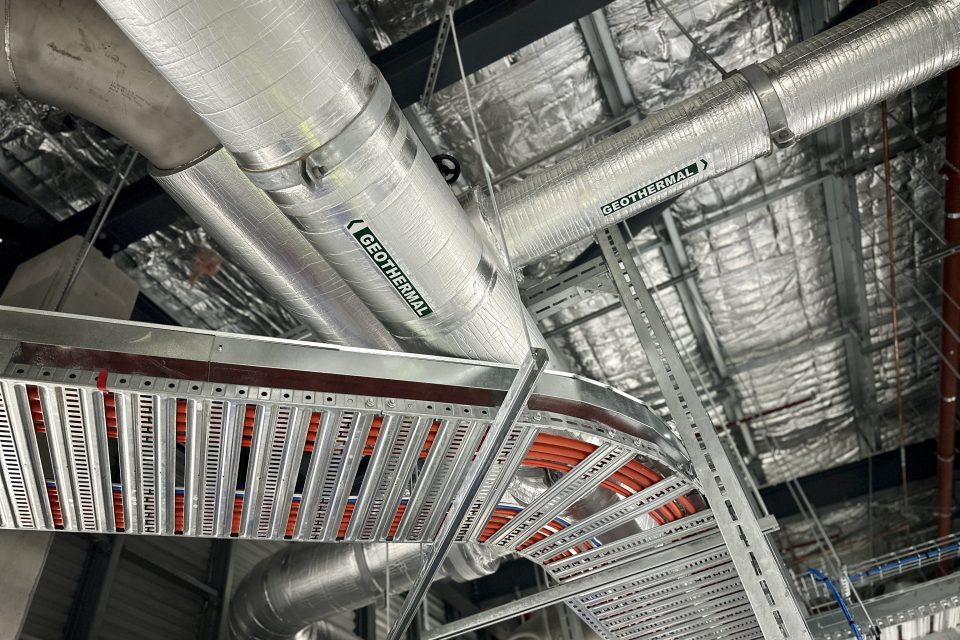
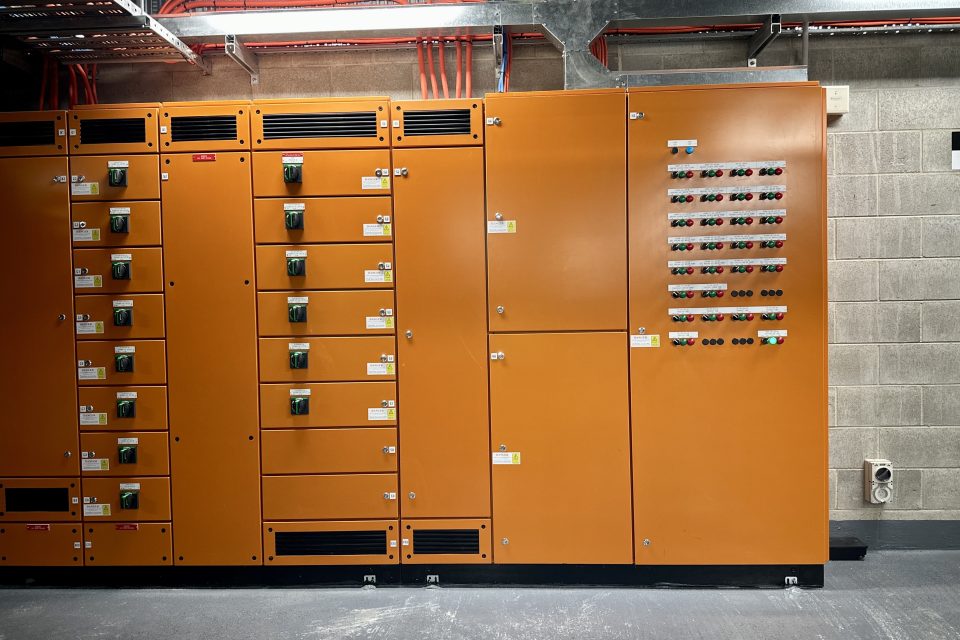
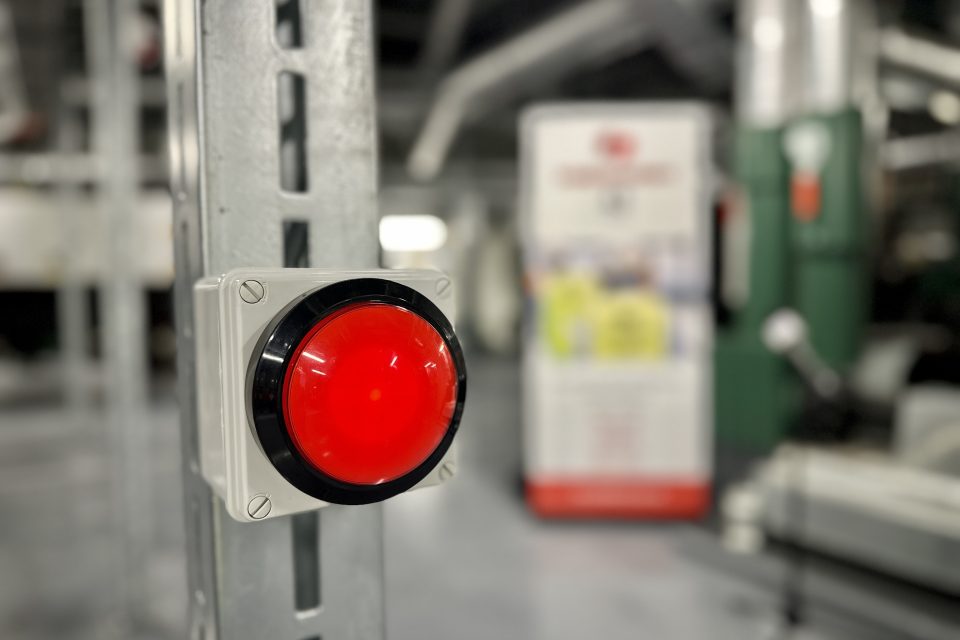
The geothermal technology, commonly used in Nordic countries and less so here, is said to save on cost, space and emissions.
According to Mr Widenbar, having the central energy plant where it is means there’s more room inside the Memorial’s main building to house “more collections, more objects and more stories”.
The whole project cost more than $10 million, a drop in the bucket when compared to the overall $550 million cost of the national institution’s current redevelopment works, but also a figure that’s expected to be paid back within a decade.
“By harnessing our natural resources onsite, this new generation of geothermal system is estimated to potentially save the Memorial up to $1 million each year compared to the energy costs of a conventional system,” Mr Anderson said.
“Just to put that into perspective, $1 million allows us to run the annual Last Post ceremonies, and $1 million allows us to take the collection on the road, to have travelling exhibitions that go all over this country.”
The project is also calculated to save up to a thousand tonnes of carbon dioxide a year.
“It is the equivalent of transporting about 87,500 students a year from Sydney to Canberra return to visit the Australian War Memorial, carbon-free,” Mr Anderson added.
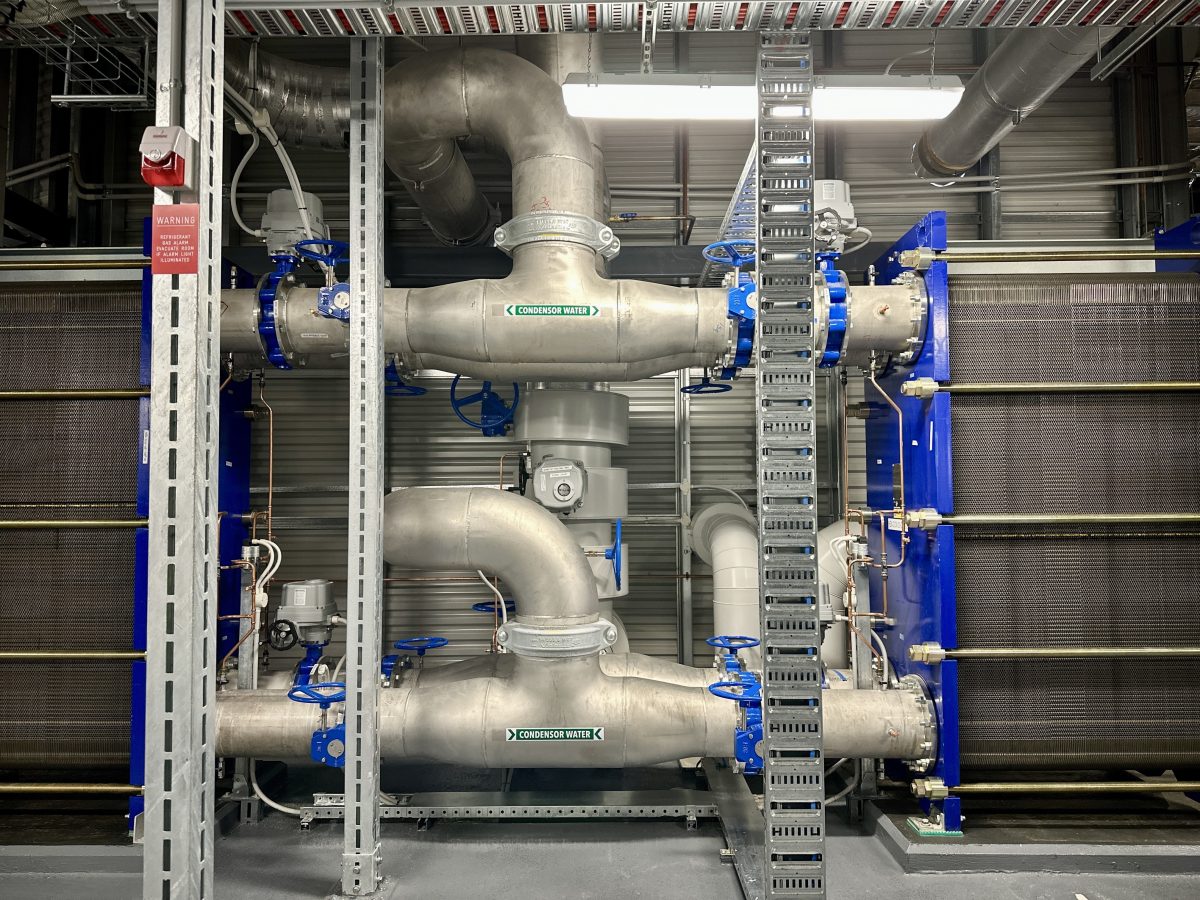
Just like the back of your fridge, but much bigger. Photo: James Coleman.
The Federal Government wants the entire country’s public service to be running at net-zero emissions by 2030, and Minister Bowen described the War Memorial’s project as an “important part of that journey”.
“This is a particularly innovative project because, in Australia, our solar and wind is so cheap that geothermal doesn’t play such a role … but we need to make every post a winner and take every opportunity to reduce emissions,” he said.
Mr Keogh added: “This geothermal project here will be an example of what new builds and expansion builds for museums, galleries, and large public spaces can be.
“A massive solar array going on the roof and the harvesting of rainwater we’re able to use on the gardens and across the War Memorial precinct will make sure that this really is one of the most sustainable projects moving forward as well.”
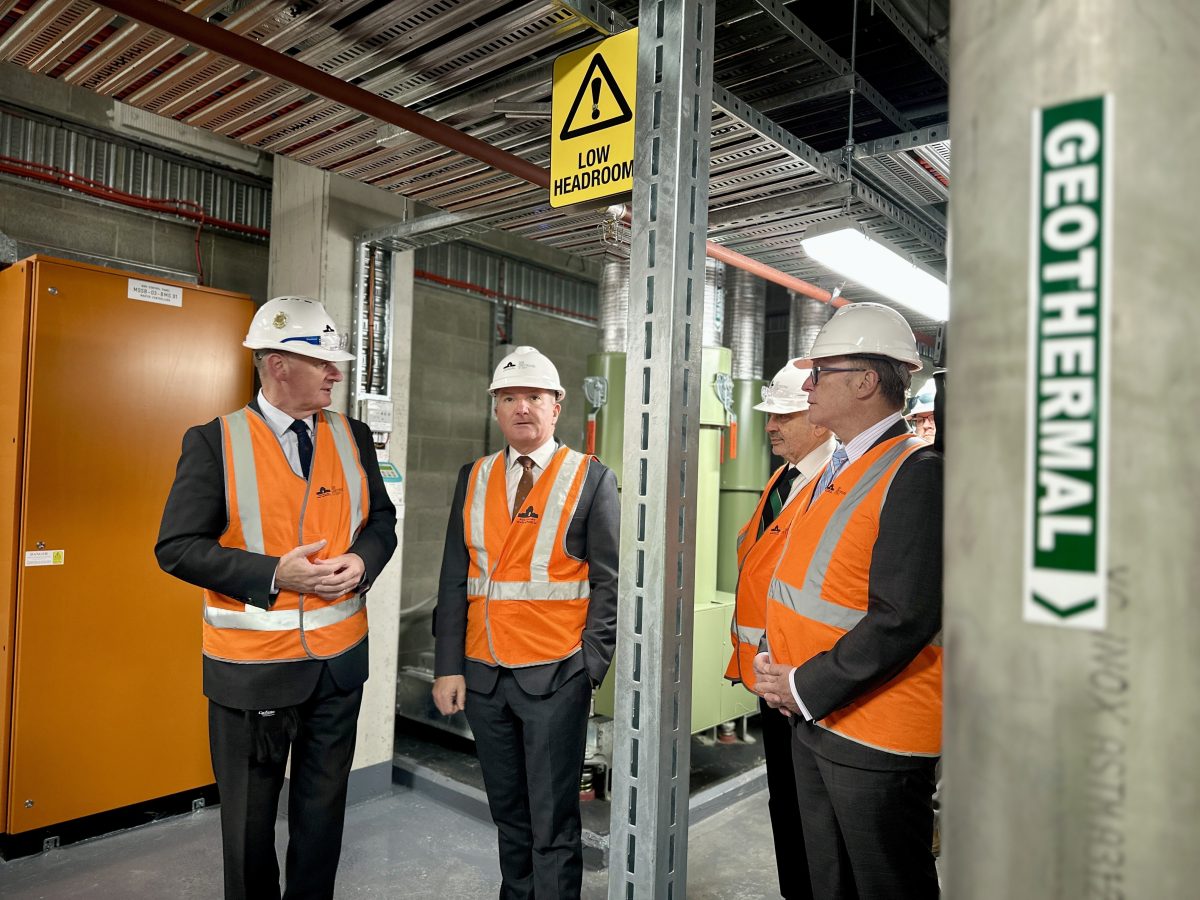
Matt Anderson and Chris Bowen at the Australian War Memorial. Photo: James Coleman.
All up, more than 200 people worked on the project, including more than 50 veterans.
“One of the things I’ve been most proud of is that when we evaluate a tender for the development, 10 per cent of the value of a contract goes towards demonstrating a veterans engagement strategy,” Mr Anderson explained.
For his part, the AWM director sees the geothermal powerhouse as his legacy.
“I’m a proud dad to my daughter in the military, and when she visited over the long weekend, she said to me that whilst using the space that we’re creating to tell the story is terribly important, so is the message this sends,” Mr Anderson said.
“We’re telling the stories of the past and the present in terms of the ADF deployments, but most importantly, this significant national institution has a very, very clear eye on the future, and a sustainable future at that.”












